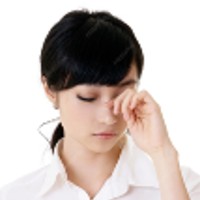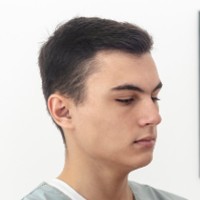What is myopia?
Myopia, or short/near-sightedness, occurs when distance vision is blurry but near vision remains clear, such as when reading a book or looking at your mobile phone. However, the description is not as straightforward as blurry or clear vision. This applies to individuals under the age of 40 who have not developed other physiological conditions, such as presbyopia (difficulty with near vision). Myopia is caused when the eye lens’ power is too strong for the length of the eyeball or when the eyeball length is too long. As a result, the focused rays of light converge to a point of focus in front of the retina rather than on the retina, creating a distant image that is out of focus. To achieve a clear image, negative lenses are added to the front of the eyes to focus the image on the retina.

Who is at risk of myopia?



There is no fixed age for the onset of myopia among minors. The onset can begin as early as birth, though this is not the norm. Myopia has three types of onsets based on age: early onset, which starts at about 3 years; typical onset, which begins around 8 years; and late-onset, which starts at about 14 years. The earlier the onset, the greater the progression of the condition, resulting in higher prescription power for glasses. Adults can also develop myopia later in life. Clinical cases now show low levels of myopia developing in the age range of 30 to 40. The causality for this low myopia has not been established yet, but long hours of close work using the computer are suspected as the probable culprit among young professionals. Myopia can also develop in the elderly population prone to a certain type of cataract (nuclear sclerosis), referred to as a reversal of their refractive power.
How to suspect myopia in children?



During an eye examination, the suspicion of myopia’s onset among patients varies based on their age. For infants and pre-schoolers, the history given is purely based on parents’ observations, while older kids and teenagers describe their symptoms. Infants’ vision is mostly centred on their immediate surroundings; as a result, it may be difficult to identify slight “blurriness.” In general, signs that parents may notice pointing towards myopia include:
How to suspect myopia in children?
How is myopia diagnosed?
Myopia is diagnosed through a general eye examination. The age of the person and their ability to respond to the practitioner determine the type of eye exam required (cycloplegic or non-cycloplegic).
Children have very short attention spans and a limited ability to focus on a given target. Due to the variation in focusing points, while they look around, their eye power also changes accordingly. This makes it challenging to determine the true power of their eyes in a relaxed state (when the eye focuses on a distant target), hence the necessity for cycloplegic refraction sight test.
Cycloplegic sight test:
A cycloplegic sight test is conducted when the optometrist uses eye drops, such as cyclopentolate or homatropine, to relax accommodation in the eye and allow the eye’s refractive power to manifest. This type of test provides an accurate prescription without relying on the patient’s responses. It is typically performed on infants, younger children, or older kids who may not comprehend or engage in the traditional test.
The findings of cycloplegic refraction can also help estimate a child’s risk of developing myopia and determine the final refractive power of the eyes.
Non-cycloplegic test:
A non-cycloplegic test is one in which the use of eyedrops (cyclopentolate or homatropine) is not required, as the child can respond accurately to provide the necessary result for determining the power of the glasses. This type of refraction is feasible for older children, typically around the age of 6 and older. However, the practitioner will assess the child’s response and decide whether the use of drops is necessary.
What are the treatment options for myopia?
Polarised Prescription Power Sunglasses:
Sunglasses with prescription power offer a blend of fashion and vision correction. These glasses ensure comfort for your eyes even in bright sunlight, providing protection for your eyes.
Fixed Tint Prescription Power Sunglasses:
Prescription power sunglasses with power are mostly carried on prescription for vision protection. These glasses offer comfort for your eyes even in the sun while providing essential eye protection.
Lens coatings for Glasses & Contact Lenses:
Explore essential options for eye protection with cutting-edge lens coating options to enhance both eye protection and lens longevity. Consider the following coatings for your glasses and contact lenses:
What is the outcome expected?
Myopia predisposes the eyes to other risk factors, such as retinal detachment, cataracts, glaucoma, and certain other retinal conditions. The onset of myopia follows a trend in which it accelerates and then slows down but does not reverse. Hence, wearing glasses does not “get rid of” or “cure” the condition but provides a clear image for the brain to process and develop vision. The progression of myopia will happen despite wearing glasses, but the speed of progression and the final power of the eyes depend on lifestyle, genetics, and using accurate correction. It is important to note that many eye conditions have overlapping symptoms. Parents should always bring their child for a sight test to rule out any existing conditions that may arise, ranging from the front to the back of the eye. There is no clear-cut age as to when a child should have their first sight test, but it is advisable to get tested before the age of 3. Uncorrected refractive error beyond the age of 7 to 8 years may end up causing a lazy eye. Children’s visual development is critical, and any refractive error prior to the age of 7 to 8 should be addressed to ensure a good visual outcome.

